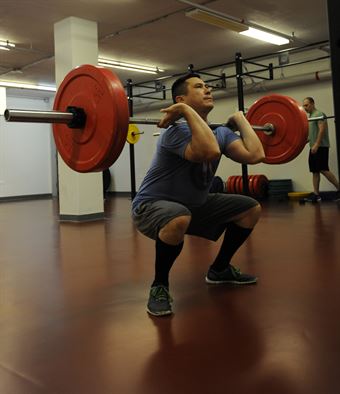You Suffered A Back Injury Exercising, Now What?

Here is a 5 step process to get you from the point of a back injury onto the path to recovery. If this has happened to you, a family member, or a friend, share it with them, it may help change their mindset when dealing with back pain.
Step 1: Don’t panic.
Try as best as you can to control your breathing to calm your body down. You may be laying on the ground in the fetal position, buckled to your knees, or in so much pain you can’t take a breath, but controlling your breathing can calm down your nervous system and let you perform step 2. Your back may start to “lock up” or tighten on your, and that is okay. This is your body trying to protect itself.
Step 2: Assess the situation.
You most likely are in significant pain, but can you feel your groin, legs, toes, and socks on your feet? Have you lost bladder and bowel control? Can you move your legs? These are important checkpoints to determine the next steps. (Here is a link to the American Academy of Family Physicians red flags for acute low back pain.) If you have lost your ability to control your bladder/bowels, can’t feel your groin, or can’t move your legs visit the ER immediately. Other than these few situations, going to the ER probably isn’t necessary. The previously mentioned symptoms usually are very rare occurrences.
So, what happened to your back? Well it could be a multitude of things. It could be a strained muscle in the lower back. It could be a sprain in some of the ligaments surrounding a joint in the back.. What if you heard a pop? It is most likely cavitations in the joints in your lower back, but it could be due to some tissue injury depending on the load. It is NOT due to a slipped disc. Discs don’t slip, they never have and never will. It’s NOT your bones moving out of place. They don’t do that either without significant trauma.
Disclaimer: We are not diagnosing you via blog post. If you would like a better understanding of what happened, get assessed.
Step 3: Begin doing the right movements.
This is SO important. The worst thing you can do here is nothing. I can’t tell you how many people I have talked to with a back injury from deadlifting, squatting, rowing or pressing, and then they lay in bed with ice or heat on their back for 2 weeks, expecting it to “heal”. This is not a recipe for success. If you don’t know what movements to do, get assessed by one of the chiropractors at Elite Sport & Spine, we will help you out. But, expecting your back to heal while you let it “rest” is just going to prolong the process. A good place to start may be some air squats, air deadlifts, or McKenzie press-ups. You might have to fight through some pain, but your body will thank you in the next few days.
When should you start moving? As soon as possible. It is that simple. As long as there are not medical red flags present (loss of feeling in legs/groin, significant weakness in your legs, and/or loss of bladder/bowel function), correct movements shouldn’t make things worse.
Step 4: Figure out why your back injury happened.
Is your form correct? Did your form break down? Why did your form break down? Was it because the weight was beyond the capacity you are capable of moving? Was proper bracing maintained throughout the lift? These are just a few of the possibilities. If you are not sure what your form looks like through lifts, video tape yourself. See if you can spot some Texas-sized findings in your form that could be leading to injury or have one of us look at it for you to provide some feedback. Maybe it could be time to work with a coach that can help with proper dosing of exercises.
Step 5: Develop a plan.
There needs to be a road to recovery and that road will look different for everyone. This plan should be goal orientated, but goals that are measurable and attainable. If the goals are too lofty, this could lead to failure, disappointment, and frustration. Expect to have some setbacks, but obtain the knowledge to know what to do in these situations. The chiropractors at Elite Sport & Spine can help you set these goals and help you along the road to recovery. I am a firm believer that continuing to train is important, but you have to find ways to do it intelligently. Maybe taking a few weeks off of back squatting or deadlifting, but substituting it with another squat variation (box, goblet, or front) or rack pull can help you still train the movement, and do it in a non-provocative way. You may need to reduce the weight, volume, and frequency, but you are still training in a similar fashion. And finally, and maybe most importantly, stay positive. You may be thinking you will never recover, but you will, and we can help you get there! Your spine and back are strong, rigid structures that can handle A LOT!
Keep training and fighting the continued battle against gravity!
This blog was written by Dr. Adam Cosson.
 262-373-9168
262-373-9168



